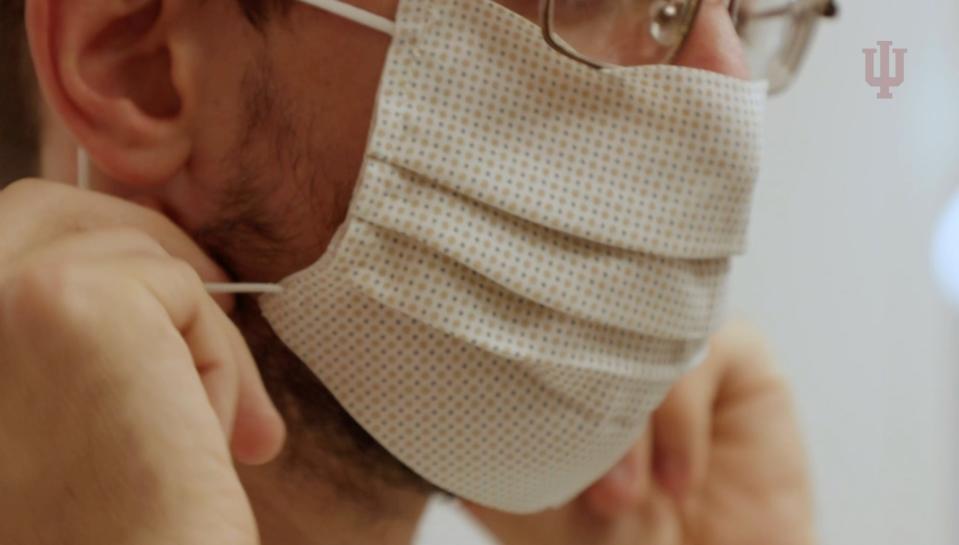Op/Ed: Don't throw away those masks! With flu season around the corner, you'll need one.
Four Harvard system physicians offered a modest proposal about health care masking in a recent issue of the “New England Journal of Medicine” (NEJM). Within days, word came from below the equator that influenza was raging in Australia. Case numbers in Australia are currently higher than the average, which doesn’t bode well for Americans. We often get hints of what will come this winter by observing the southern hemisphere respiratory disease numbers.

Despite the May 5 official ending of the global pandemic by the World Health Organization, many respiratory viruses remain. Indiana hospitals have removed most of the SARS-CoV-2 era masking rules, requiring masking only for surgeries and patient care of those most at risk for respiratory infections. In most situations, IU Hospitals ended visitor restrictions and mask requirements earlier this spring.
In the NEJM article, Harvard doctors believe hospitals should manage their masking policies strategically by studying their community needs. Hospitals, by definition, are full of sick people who may present a significant risk to others who are medically compromised. And the doctors believe that nosocomial infections caused by viruses other than SARS-CoV-2 don’t receive the attention certain groups deserve.
“Viewed through the lens of these concerns, masking in health care facilities continues to make sense,” reported the Harvard physicians. “Masks reduce respiratory viral spread from people with both recognized and unrecognized infections; SARS-Co-V-2, influenza, RSV, and other respiratory viruses can cause mild and asymptomatic infections, so staff or visitors might not realize they are infected, yet asymptomatic and presymptomatic people can still be contagious and spread infections to patients.” The NEJM article noted that studies show masking of health workers can reduce nosocomial respiratory viral infections by approximately 60%. Sixty percent is an impressive number.
Using local community transmission rates can help a hospital peg masking guidelines for its situation. When Indianapolis, for example, has a high flu rate, you can be sure there are more flu patients in the hospital than when the influenza is limited. The authors believe staff should always be masked when working with patients who face poor outcomes if catching a respiratory infection. The group includes transplant patients, those with chronic lung and heart disease, older adults, or those with immunosuppression from various causes. And some children — especially those born prematurely or with asthma — may fall into that group. The Centers for Disease Control and Prevention provides guidance for influenza patients, “A surgical mask or fit-tested respirator should be worn by healthcare personnel who are within six feet of a suspected or laboratory-confirmed influenza patient.”
Having worked in Indiana hospitals for many years, I suspect each facility already has a task force planning for next winter. Hospitals should prepare for what may be a tough influenza season. As for me, I’ll dig out my favorite hot pink N-95 and wear it to the hospital and doctor appointments.
Amy McVay Abbott is a journalist and author based in southern Indiana.
This article originally appeared on Indianapolis Star: A bad flu season in Indiana could mean masks will make a comeback

